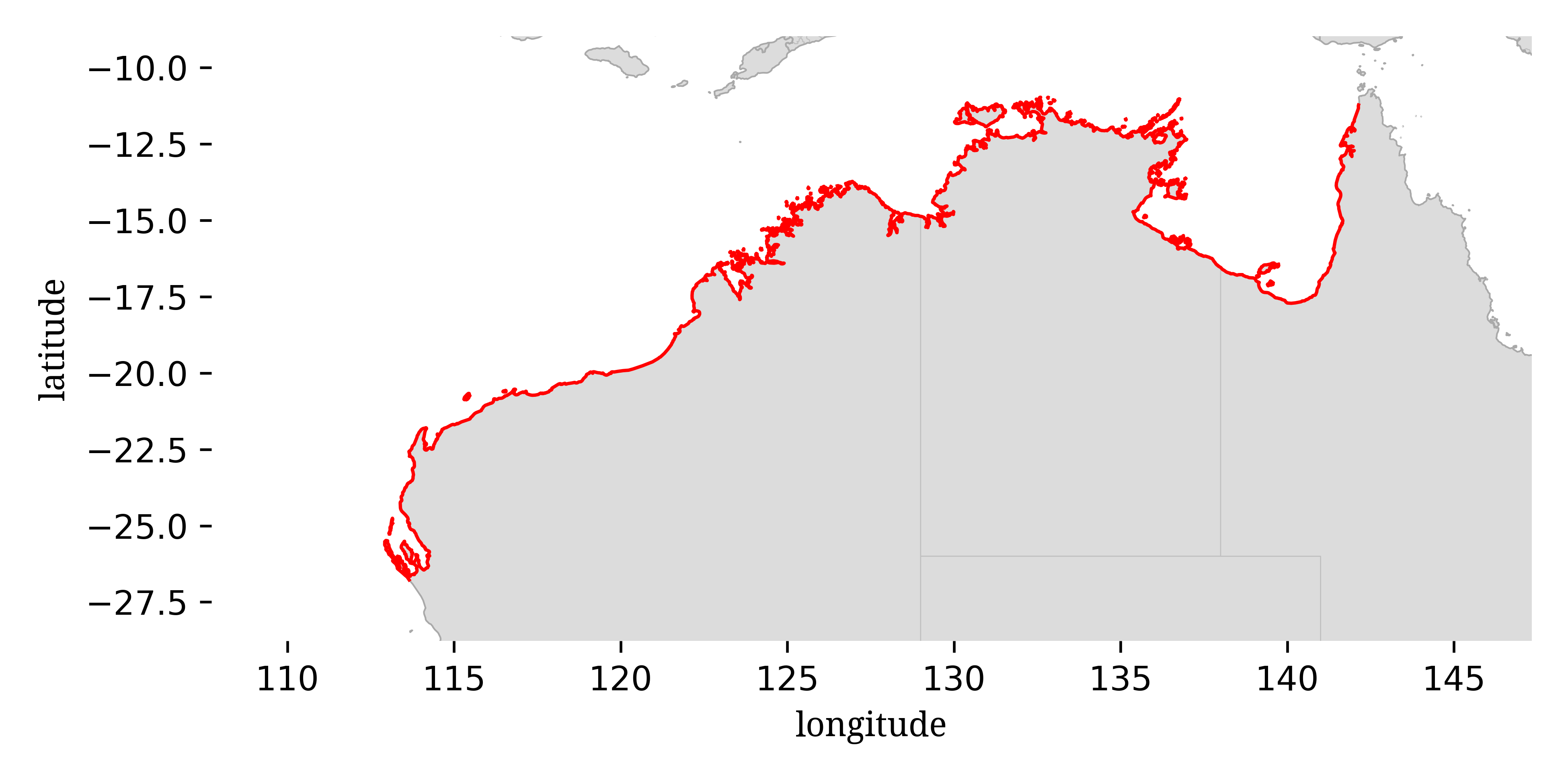
This guide is designed for identification “in the field” where you might be looking at live crabs by eye or through binoculars or from photographs. I will generally try to avoid characters that will require you to physically catch the crab, although I may mention a few for secondary verification. It does not include the more strict taxonomist-style characters that may only be visible under a microscope or via dissection. It is also assumed that the individuals are living, as death (and even capture) can cause dramatic color change.

This is a guide to the fiddler crabs of northern and western Australia, including Western Australia, Northern Territory, and the western half of Queensland (west of the Cape York Penninsula/Torres Strait). There are nine species in this region:
Austruca mjoebergi should be easily identifiable in this region as it is the only broad front species present. The carapace front refers to the part of the carapace that sits between the eyestalks, and the breadth refers to how wide it is (or how far apart the eyestalks are). Austruca mjoebergi is the only species in this region where the eyestalks are separated and the front does not appear pinched. It should be noted that the difference between the front breadth of Austruca mjoebergi and some of the Tubuca species in this region is not as striking as the broad vs. narrow front difference frequently seen in other areas.
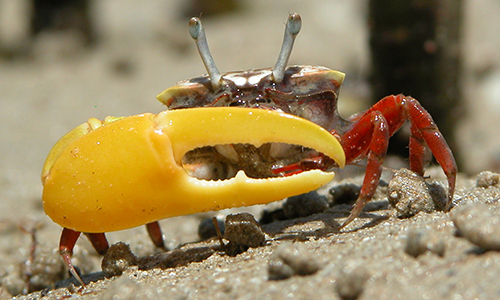

Beyond front breadth, Austruca mjoebergi is easily identifiable by color as it is the only species in the area with a bright yellow large claw. Its carapace is generally a pale gray, sometimes with black markings, and the legs are frequently red or gray.
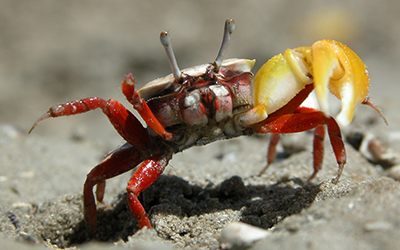
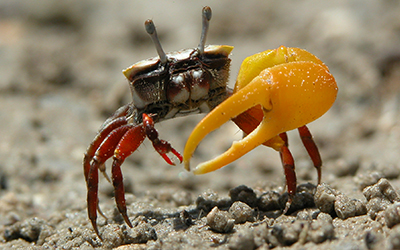
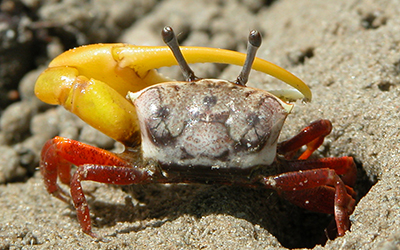

The broad front species Austruca triangularis has been found on islands off the shore of northern Australia, but not on the mainland. It would be easy to distinguish from Austruca mjoebergi if it were to occur.
Among the narrow front fiddler crabs in this region, Gelasimus dampieri is among the easiest to identify as it is the only species of the subgenus Gelasimus (Gelasimus) in the area and has the typical colors and claw shape associated with that subgenus. While the carapace colors of Gelasimus dampieri are similar to Tubuca signata, the shape and color of the claws are very different.
Its large claw is strikingly two-toned, generally orange on the bottom half and white or pink on the upper half; sometimes there is a darker orange spot around the base of the lower finger. Its carapace is usually a mix of pale blue and black. Its legs tend to be orange. The lower finger of the large claw generally has one or two large teeth, although regenerated claws may appear smoother and toothless.
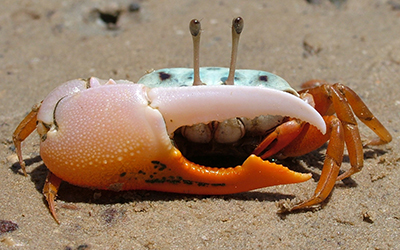
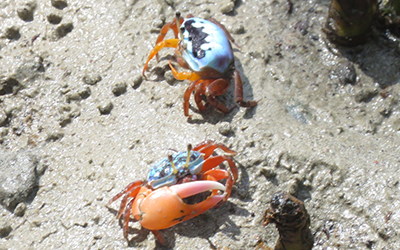
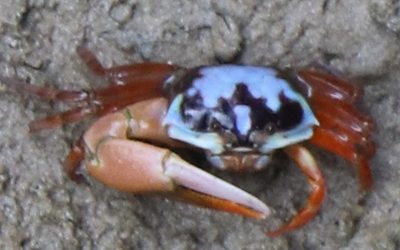
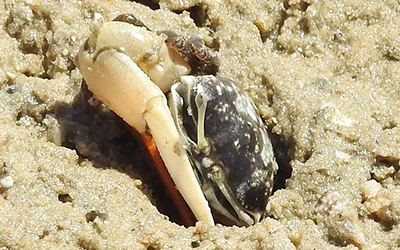
Tubuca flammula is another easy-to-identify species as it generally has a solid black carapace with a bit of bright red on the front edge (a pair of parallel grooves that run front-to-back down the middle of the carapace may also be reddish), while the rest of the crab is more-or-less entirely bright scarlet. The upper finger of the large claw may be a bit paler and trend toward white.
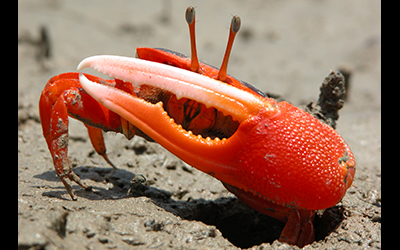
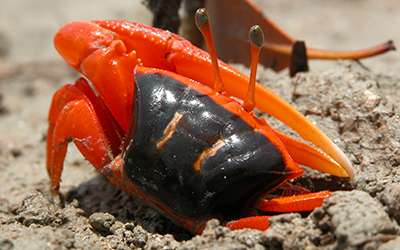

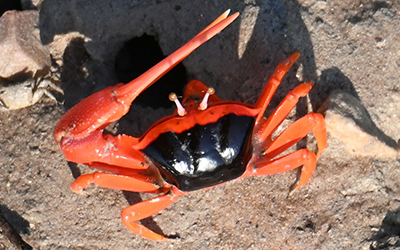
Tubuca capricornis is a highly variable species, but should be recognizable by a combination of color and claw form.
The most common carapace pattern in Tubuca capricornis is a mostly black carapace with pale blue, yellow, or white spots. The legs generally follow this same color variation, although the two rear legs generally have a large distinct, pale blue (sometimes almost white) blotch on the rear of the the top segment. This color will sometimes spread beyond this segment. The large claw usually has a red or pale orange hand, with most of the upper finger and the outer half of the lower finger white.
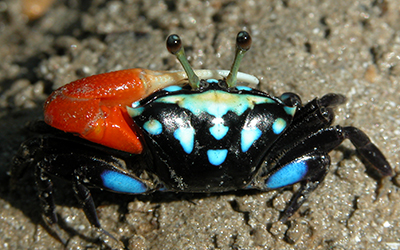
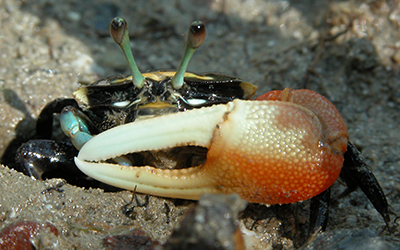
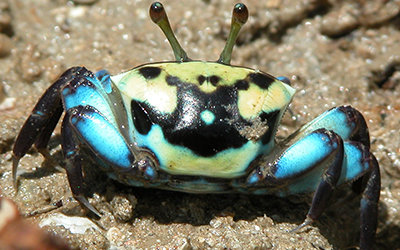
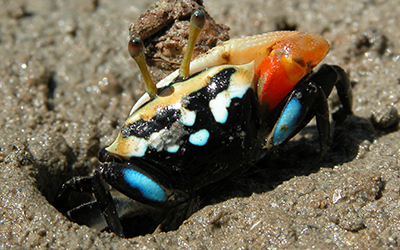
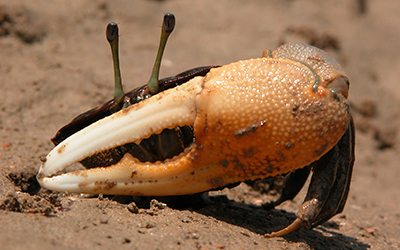
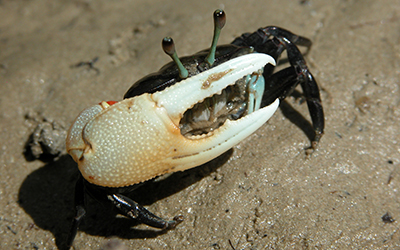
Tubuca signata has a pale blue/white and black carapace. The claw is striking in that the hand is bright red, while the fingers are bright white. The demarcation between the color of the hand and the fingers is particularly strong in this species. The fingers tend to be long relative to the hand, appear particularly flattened and smooth, and frequently come together along a long straight edge on the bottom finger.
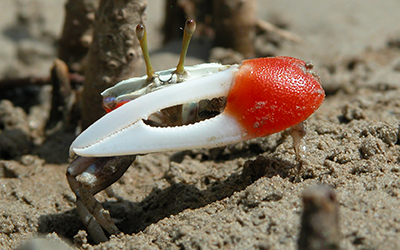
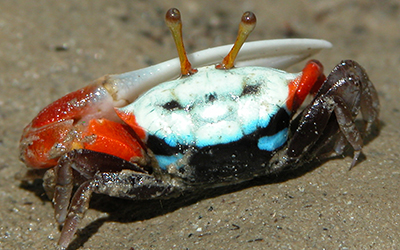
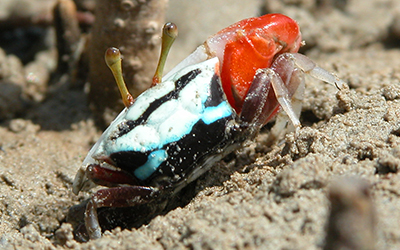
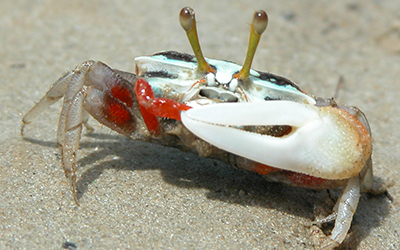
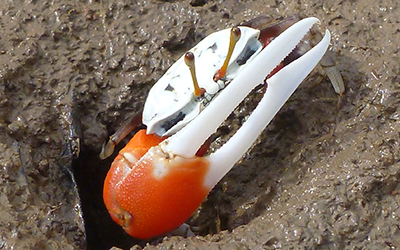
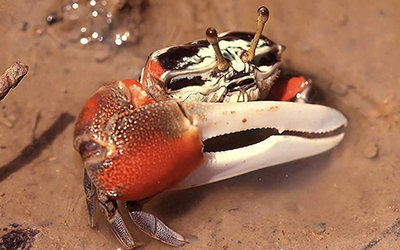
Tubuca elegans has many of the same colors as Tubuca signata, but they are distributed somehwat differently. Tubuca elegans has a blue and black carapace, but it leans more toward the black, where Tubuca signata leans more toward the paler blue/white. The large claw of Tubuca elegans is pink/red, with paler fingers, but the red coloration frequently extends a bit onto the fingers, as opposed to Tubuca signata where the fingers are entirely white. The fingers of Tubuca elegans tend not to appear as strikingly flat and smooth and the straight edge along the tip of the lower finger is not as pronounced as in Tubuca signata.
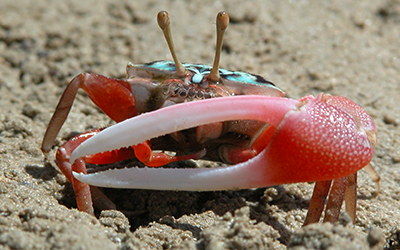
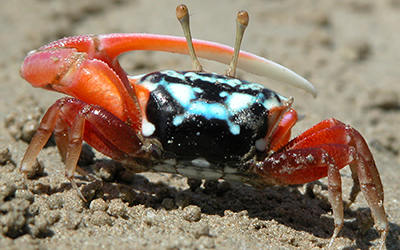
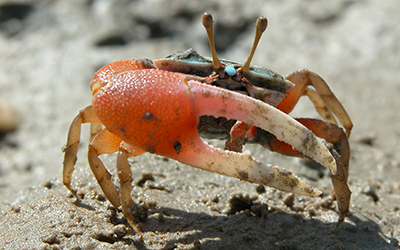

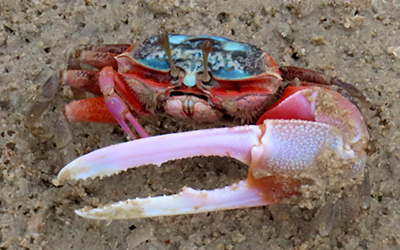
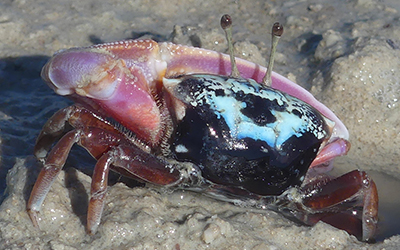
Tubuca polita has a predominantly black and cream carapace, occasionally with some greenish-blue blotches. When present, these blotches are much more green than the pale, purer blue found on Tubuca elegans. The large claws of the two species are also similar. The large claw of Tubuca polita is pink/red, with paler fingers, but the pink coloration frequently extends a bit onto the fingers. On average Tubuca elegans seems to have relatively longer fingers, while those of Tubuca polita tend to be shorter, but there is overlap between the two species.
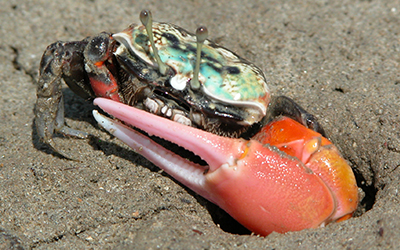
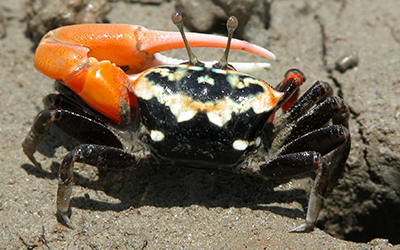
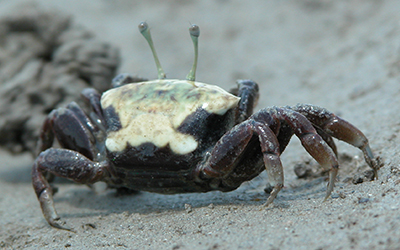

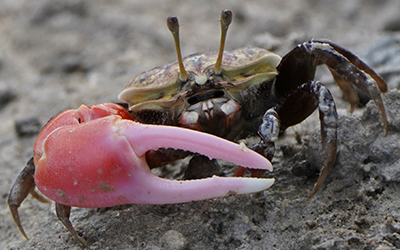
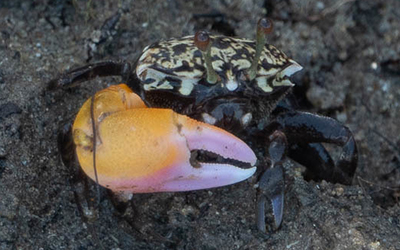
Tubuca seismella lacks the brighter colors of its cousins. Its carapace is a light marbled brown or gray, frequently with lighter speckles, and its large claw tends to have a pale peach/pink hand with white fingers. The fingers have a similar flattened and smooth appearance as found in some of the other local species, but the general coloration of the species is very different.
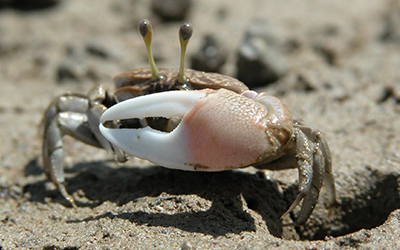
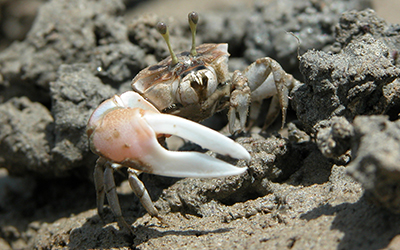
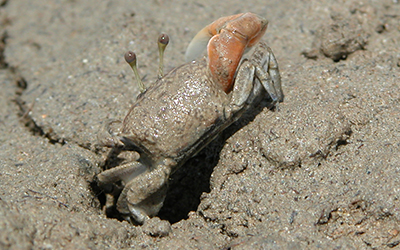
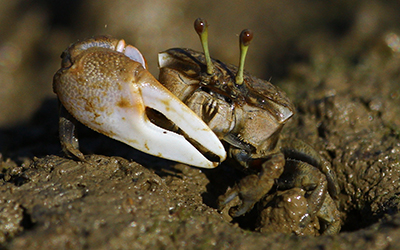
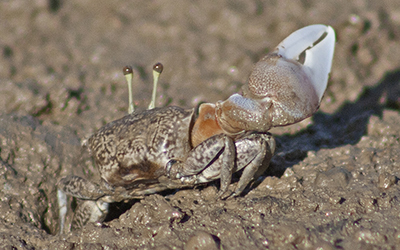
Tubuca hirsutimanus is generally described in the literature as very similar in form as Tubuca signata, but very different colors. It appears to be a somewhat obscure, rarely observed species.
Tubuca hirsutimanus has a pale gray/brown carapce with dark speckling and large cream blotches. Its large claw has a pale orange/brown hand, often darker around the base of the lower finger; the fingers are generally white and smooth looking.
Based on written descriptions and illustrations, I am fairly confidant the following photos are Tubuca hirsutimanus.